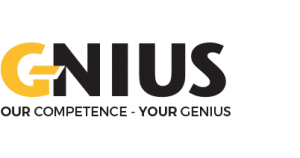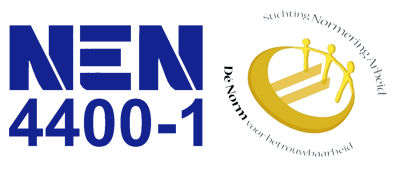Adoption of new technology: overcoming fear among healthcare professionals
The healthcare sector is evolving, and new technologies are increasingly being introduced, which understandably raises concerns among healthcare professionals. Questions such as “Will robots take over my job?” and “Will I lose the connection with the patient if everything becomes automated?” are frequently raised. This fear can be a barrier to the successful adoption of new technologies in healthcare. In this article, we discuss how this fear among healthcare professionals can be alleviated so that they can embrace the benefits of innovation with confidence and enthusiasm.
What drives the fear?
Uncertainty about the future of work
One of the main reasons for fear among healthcare professionals is the uncertainty about their future role. With the rise of automation and AI, many people wonder if their jobs are at stake. This lack of clarity can lead to fear and resistance to change.
Loss of human contact
Another common fear within healthcare is the potential loss of human contact due to the introduction of new technologies. Healthcare providers often value the personal aspect of their work and fear that technology will diminish it.
Benefits of new technologies in healthcare
Efficiency and productivity
It is important to emphasize that new technologies in the healthcare sector bring many benefits. They can increase efficiency and improve the productivity of healthcare providers by taking over repetitive tasks, allowing healthcare professionals more time for direct patient care and human interaction.
Improved patient care
In addition, technological innovations can lead to an improvement in the quality of care. From advanced medical devices to digital patient records, these tools assist in more accurate diagnosis and treatment of patients, ultimately resulting in better outcomes.
Robotic Process Automation (RPA)
In addition to the mentioned benefits, technologies such as Robotic Process Automation (RPA) also play a significant role in improving efficiency in healthcare. RPA enables healthcare institutions to automate repetitive and administrative tasks such as processing invoices, updating patient records, and scheduling appointments. By implementing RPA, healthcare providers can save valuable time that they can spend on direct patient care and strengthening human contact. Moreover, RPA reduces the risk of human errors and ensures consistent and accurate task execution, ultimately improving the overall quality of care.
How to overcome fear?
To alleviate the fear of healthcare professionals and help them embrace the benefits of new technologies, several strategies need to be implemented.
It is essential to adequately train healthcare professionals about the new technologies being introduced. By providing the necessary knowledge and skills, they can feel more confident in using these tools. This helps them understand that technology can be used as support and does not necessarily mean replacing staff.
Healthcare providers should be actively involved in the implementation process of new technologies. Their input and feedback are invaluable in designing systems that seamlessly fit their needs and workflows.
Consider setting up a support system where healthcare professionals can address their questions and concerns. This makes employees feel more supported and can alleviate many fears. Additionally, always communicate clearly and set realistic expectations. Being transparent about the capabilities and limitations of technology can prevent unrealistic expectations.
The role of leadership
Open and honest communication is crucial in overcoming fear among healthcare professionals. Leaders should create an environment where healthcare professionals feel free to express their concerns and objections. Additionally, they should encourage the adoption of new technologies.
Inspirational leadership
By promoting a culture of innovation and growth, leaders can strengthen the confidence and motivation of healthcare providers. They can do this by emphasizing the importance of technological innovation and outlining an inspiring vision for the future of healthcare.
Sharing success stories
Sharing success stories from other healthcare institutions that have implemented new technologies can also help reassure anxious staff. It demonstrates that change is possible and can yield positive results.
Support and coaching
Finally, it is important for leaders to support their healthcare professionals during the transition to new technologies. Through training, coaching, and continuous support, they can strengthen the confidence and proficiency of their team.
Conclusion
It is understandable that healthcare professionals may experience fear when new technologies are introduced in healthcare. However, through education, communication, involvement, and leadership, this fear can be overcome. By working together and creating a culture of trust and support, healthcare institutions can fully leverage the benefits of technological innovation and improve the quality of care.














